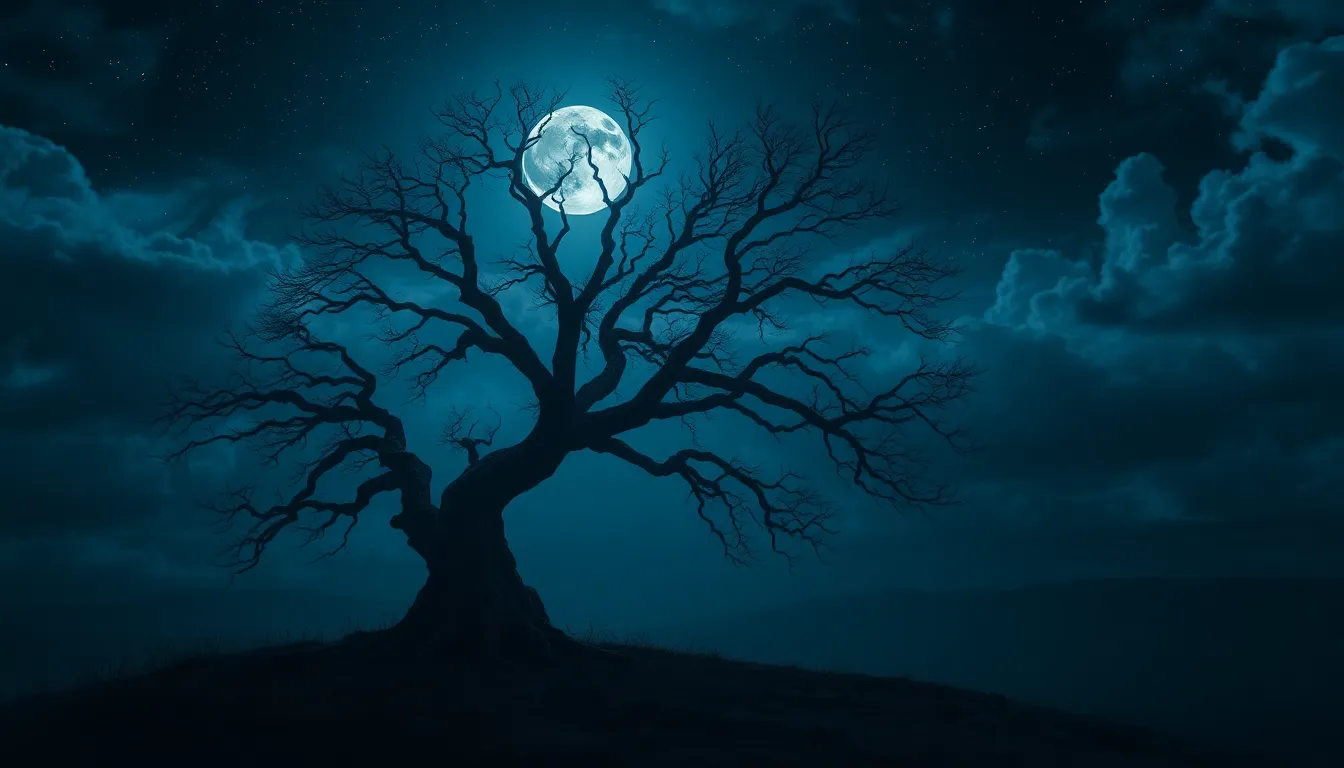The Role of Women in Baltic Mythological Narratives
The fascinating world of Baltic mythology offers a glimpse into the ancient beliefs and values of the Baltic peoples. While the narratives often center on gods and heroes, the role of women in these stories is surprisingly complex and multifaceted. These ancient myths reveal a rich tapestry of female figures, ranging from powerful goddesses who shape the very fabric of reality to mortal women who navigate the challenges of love, family, and destiny. Exploring the diverse roles of women in Baltic mythology allows us to gain deeper insights into the cultural, social, and religious dynamics of the ancient Baltic societies.
Introduction: Baltic Mythology and its Diverse Depiction of Women
Baltic mythology, encompassing the mythologies of the Latvian, Lithuanian, and Old Prussian cultures, presents a vibrant tapestry of gods, goddesses, mythical creatures, and captivating narratives. These narratives often depict the world as a dynamic and interconnected place, where the natural forces, human actions, and the divine realm intertwine. Within this rich mythological landscape, women play a crucial role, encompassing a wide range of characters, from powerful goddesses and wise mothers to cunning witches and heroic warriors.
Baltic mythology is not a monolithic entity. Different narratives, passed down through generations, often portray women in varying lights, reflecting the complex societal structures and evolving beliefs of the ancient Baltic people. Some female figures are depicted as benevolent forces, while others represent the dangers and complexities of human nature. Understanding the diverse roles of women in these narratives provides a valuable window into the beliefs, values, and cultural landscape of the Baltic people.
The Goddesses: Powerful Figures Shaping the World
At the heart of Baltic mythology reside powerful goddesses who embody fundamental aspects of the natural world, human life, and the divine realm. These goddesses are not passive observers; they are active shapers of reality, wielding influence over the elements, fertility, destiny, and even the very fabric of existence.
One of the most prominent figures is Laima, the goddess of fate and destiny. She is often represented as a weaver, spinning the threads of life and determining the course of each individual's existence. Another significant goddess is Saule, the sun goddess, who brings warmth, light, and life to the world. She is revered for her power over the seasons and her role in nourishing the earth.
These goddesses are not merely passive symbols of feminine power; they are active agents who shape and influence the world around them. Their stories and actions reveal a strong sense of female divinity and the profound influence of feminine energy within the Baltic worldview.
The Mothers: Nurturers, Guardians, and Keepers of Tradition
The role of mothers in Baltic mythology is central to the preservation of family, community, and cultural traditions. Mothers are depicted as nurturing figures, responsible for the care and upbringing of children, the maintenance of the household, and the transmission of vital knowledge and wisdom across generations. Their deep connection to the earth and the cycles of nature makes them guardians of tradition, providing stability and continuity within the family and community.
Mothers in these narratives are often associated with the concepts of fertility, growth, and renewal. They are seen as the primary source of life and nourishment, not only for their children but also for the entire community. Their wisdom and experience are highly valued, and their role in shaping the moral and spiritual values of future generations is considered crucial.
The Witches: Powerful Magic-Wielders and Agents of Fate
Witches in Baltic mythology are figures of both fascination and fear. They are powerful magic-wielders who possess knowledge of herbs and the forces of nature, often able to manipulate the elements and influence the course of events. Their abilities can be used for both good and evil, making them complex and unpredictable figures in the narratives.
However, witches are not always portrayed as malevolent figures. Some stories depict them as benevolent healers, wise women, and guardians of ancient knowledge. Their connection to the supernatural world and their ability to control the forces of nature make them both revered and feared figures, reminding us of the power and uncertainty inherent in the natural world.
The Virgins: Symbols of Purity, Fertility, and Sacrifice
Virgins in Baltic mythology represent a fascinating concept, embodying a blend of purity, fertility, and sometimes, a tragic destiny. These figures are often associated with nature's cycles, particularly the blossoming of spring and the promise of new beginnings. They symbolize innocence, youthful energy, and the potential for life and growth. However, their role can also be linked to sacrifice, representing the giving of life or the offering of self for the betterment of the community.
One notable example is the tale of the "Virgin of the Spring," a maiden who sacrifices herself to ensure the fertility of the land. Her death brings forth a bountiful harvest, showcasing the notion of sacrifice as a means of renewal and sustenance. This theme echoes in other Baltic myths, where virginal figures are often associated with ritual offerings and the appeasement of powerful deities.
These narratives highlight the dual nature of the virgin archetype, representing both the potential for life and the willingness to sacrifice for the greater good. Their roles in these stories reflect the complex relationship between purity, fertility, and the cyclical nature of life and death within the Baltic worldview.
The Wives and Mothers: Balancing Domesticity and Power
In Baltic mythology, wives and mothers are depicted as pillars of the family and community. They are responsible for managing the household, raising children, and maintaining the stability of family life. However, they also possess a unique blend of power and influence, often acting as advisors to their husbands and playing significant roles in shaping the community's values and traditions.
These figures are often portrayed as strong and resilient, capable of navigating the challenges of family life while maintaining their own sense of dignity and authority. While their primary focus is on domesticity and family, their influence extends beyond the home, contributing to the overall well-being and prosperity of the community.
For example, the wives of powerful warriors or leaders are often depicted as wise counselors, capable of providing guidance and mediating conflicts. Their ability to balance domestic responsibilities with a strong sense of community involvement makes them powerful figures within the narratives.
The Heroines: Challenging Norms and Embracing Independence
Baltic mythology is not devoid of strong female figures who challenge traditional norms and embrace independence. These heroines are often characterized by their courage, determination, and defiance of societal expectations. They are not passive recipients of fate; they actively shape their own destinies and challenge the status quo.
For instance, the story of Jurate, the sea goddess who defies the gods and falls in love with a mortal fisherman, demonstrates the power of love and personal choice in defying divine decree.
These heroines often possess exceptional abilities, defying traditional gender roles and showcasing the potential for women to achieve great things outside the confines of domesticity. Their stories serve as reminders that women are capable of independence, agency, and extraordinary achievements.
The “Femme Fatale”: The Dangers of Power and Manipulation
Not every female figure in Baltic mythology is depicted in a positive light. The "femme fatale" archetype emerges in certain narratives, representing the dangers of power, manipulation, and the seductive allure of forbidden desires. These figures are often associated with dark magic, cunning strategies, and the ability to exploit weaknesses for personal gain.
While their seductive charm and captivating beauty can be alluring, they often lure men into traps, leading to misfortune or even destruction. These figures serve as cautionary tales, reminding us of the potential consequences of unchecked ambition, the dangers of seduction, and the destructive nature of unchecked power.
Theories on the Role of Women in Baltic Mythology:
The diverse and complex roles of women in Baltic mythology have sparked ongoing discussions among scholars and researchers. Analyzing these narratives, researchers explore potential influences and motivations behind the depiction of female figures, considering both the historical context and the cultural values reflected in these stories.
The Influence of Matriarchal Societies: Exploring Possible Connections
Some scholars propose that the prominence of powerful goddesses and the active roles of women in Baltic mythology reflect the possible influence of matriarchal societies in ancient Baltic cultures. They point to the strong female figures in these narratives, the reverence for female deities, and the recurring themes of fertility and the power of nature as potential evidence of a matriarchal social system.
However, while the evidence may suggest a strong matrilineal component in Baltic societies, the exact nature of social structures in ancient Baltic cultures remains a subject of ongoing debate and research.
The Impact of Patriarchal Structures: Examining Gender Roles and Power Dynamics
Others argue that the roles of women in Baltic mythology are ultimately shaped by the influence of patriarchal structures, reflecting traditional gender roles and the power dynamics of the time. They point to the recurring themes of domesticity, motherhood, and the limited roles of women outside the family as evidence of a patriarchal social system.
These scholars suggest that the presence of powerful goddesses and heroines in these narratives may be viewed as a reflection of a patriarchal society's efforts to reconcile its own power structures with the acknowledgment of feminine energy and the importance of women's roles.
Regardless of the specific interpretations and theories, the diverse roles of women in Baltic mythology provide a valuable window into the beliefs, values, and societal dynamics of the ancient Baltic peoples. They offer insights into the complex interplay of gender, power, spirituality, and the human experience in a fascinating and often-overlooked corner of world mythology.
FAQ
Q: Are women always depicted as positive figures in Baltic mythology?
A: No, like in most mythologies, women are portrayed in a variety of ways, both positive and negative. Some stories depict powerful goddesses and wise mothers, while others feature figures who embody danger and manipulation.
Q: How do the roles of women in Baltic mythology compare to other mythologies?
A: While the roles of women vary across different mythologies, Baltic mythology is notable for its diverse portrayal of female figures, ranging from powerful deities to independent heroines.
Q: What can we learn about Baltic culture from the roles of women in their mythology?
**A: ** The diverse roles of women in these narratives provide insights into the beliefs, values, and societal dynamics of the ancient Baltic people. They reflect notions of family, community, the power of nature, and the complex relationship between men and women in their culture.




